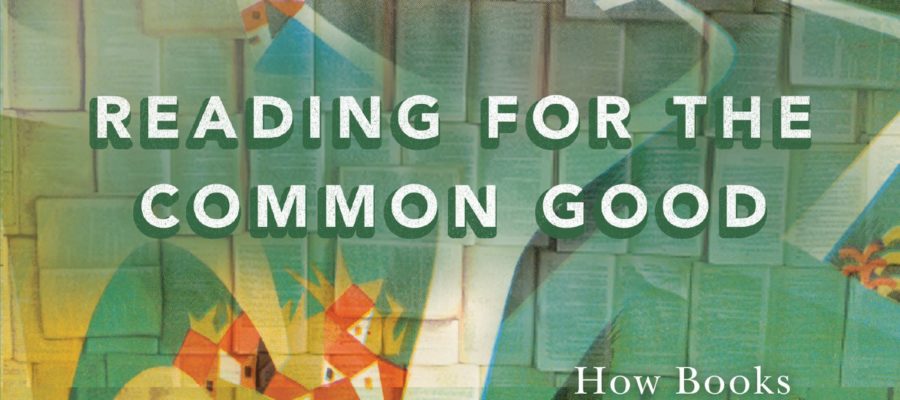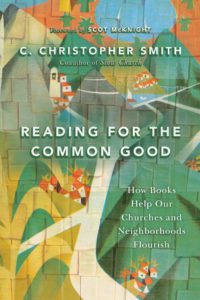Some are born with a silver spoon.
C. Christopher Smith was born with a golden shelf.
I am pleased to recommend my friend Chris Smith and his book!
 There is no better person to talk about reading books than the editor of Englewood Review, Chris Smith. Some are born with a silver spoon, Chris was born with a golden shelf. From an early age, Chris Smith has been reading, he will not stop, and wants others to join him. In fact, Chris wants everyone to be Reading for the Common Good. Chris believes that reading not only deepens interaction with the world but broadens horizons. Listening to other points of view encourages caring for others even if disagreement with other points of view exist. Cultural knowledge expands. Empathy for perspectives deepens. Compassion weaves its way through conversations.
There is no better person to talk about reading books than the editor of Englewood Review, Chris Smith. Some are born with a silver spoon, Chris was born with a golden shelf. From an early age, Chris Smith has been reading, he will not stop, and wants others to join him. In fact, Chris wants everyone to be Reading for the Common Good. Chris believes that reading not only deepens interaction with the world but broadens horizons. Listening to other points of view encourages caring for others even if disagreement with other points of view exist. Cultural knowledge expands. Empathy for perspectives deepens. Compassion weaves its way through conversations.
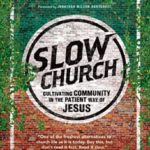 Slow Church is the platform from which Chris speaks which he reiterates in the first and ninth chapters. Cultural reading changes one’s culture, Smith argues in chapter two. Churches should read to establish not only their place in a community, chapter three contends, but how to benefit their community. The winsome nature of personal stories attracts the reader. Chris explains his own background and how his upbringing has helped shape his life today encouraging others to do the same. Neighbors come from neighborhoods hence Smith’s emphasis on reading for a place with the people in it. Smith ventures into the arenas of economics and politics with the hope that all people would become invested with others in their place sustained by communal reading. Encouragement toward the book’s subtitle How Books Help Our Churches and Neighborhoods Flourish rounds out Smith’s contribution with a substantive list of tomes gauged to help congregants become better congregations wherever they congregate.
Slow Church is the platform from which Chris speaks which he reiterates in the first and ninth chapters. Cultural reading changes one’s culture, Smith argues in chapter two. Churches should read to establish not only their place in a community, chapter three contends, but how to benefit their community. The winsome nature of personal stories attracts the reader. Chris explains his own background and how his upbringing has helped shape his life today encouraging others to do the same. Neighbors come from neighborhoods hence Smith’s emphasis on reading for a place with the people in it. Smith ventures into the arenas of economics and politics with the hope that all people would become invested with others in their place sustained by communal reading. Encouragement toward the book’s subtitle How Books Help Our Churches and Neighborhoods Flourish rounds out Smith’s contribution with a substantive list of tomes gauged to help congregants become better congregations wherever they congregate.
 Key genres, authors, and books form Smith’s Reading. Novels preach without preaching. Finding Chaim Potok’s The Gift of Asher Lev connected to the art world brings a smile to one’s face (79). Thomas Cahill’s How the Irish Saved Civilization is non-fiction brought to life while bestowing requisite gratitude upon those who salvaged texts, a celebration of reading (83-85). Poetry plumbs the depths of humanities’ collective soul creating internal cracks, opening the reader to ideas unreached by other means (48-49). Social commentary enlarges the heart, helping the reader see where she may have been blind (46). First-person narratives are essential guides through personal lives lived in public places (47). Theologies mentioned focus on ecclesiological concerns. Gerhard Lohfink (154) has had foundational impact on Englewood Christian Church where Smith is a member. Smith urges a wide variety and wide range of reading so that The Church can enlarge its influence, if not its heart.
Key genres, authors, and books form Smith’s Reading. Novels preach without preaching. Finding Chaim Potok’s The Gift of Asher Lev connected to the art world brings a smile to one’s face (79). Thomas Cahill’s How the Irish Saved Civilization is non-fiction brought to life while bestowing requisite gratitude upon those who salvaged texts, a celebration of reading (83-85). Poetry plumbs the depths of humanities’ collective soul creating internal cracks, opening the reader to ideas unreached by other means (48-49). Social commentary enlarges the heart, helping the reader see where she may have been blind (46). First-person narratives are essential guides through personal lives lived in public places (47). Theologies mentioned focus on ecclesiological concerns. Gerhard Lohfink (154) has had foundational impact on Englewood Christian Church where Smith is a member. Smith urges a wide variety and wide range of reading so that The Church can enlarge its influence, if not its heart.
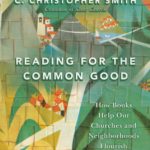 Crucial to understanding Smith’s perception of his world is Peter Senge’s book The Fifth Discipline, his own book Slow Church, and chapter two’s exposition “social imagination.” Senge wrote a management book in the 1990’s which focused important emphasis on the highest form of learning, synthesis. Collective learning is as much key to business—the focus of The Fifth Discipline—as it is to community learning. Smith and Pattison penned Slow Church to accentuate the participative process of local congregations. As the title suggests, time matters; taking time to listen and understand others, matters most. Charles Taylor’s Modern Social Imaginaries builds the idea that accumulated knowledge forms interpretational structures allowing groups to think and live together. The short form of Smith’s discussion is his quote of Richard Foster, “What we study determines the kinds of habits that are formed” (53). Reading for the Common Good in any community depends not so much on how folk read but what they read.
Crucial to understanding Smith’s perception of his world is Peter Senge’s book The Fifth Discipline, his own book Slow Church, and chapter two’s exposition “social imagination.” Senge wrote a management book in the 1990’s which focused important emphasis on the highest form of learning, synthesis. Collective learning is as much key to business—the focus of The Fifth Discipline—as it is to community learning. Smith and Pattison penned Slow Church to accentuate the participative process of local congregations. As the title suggests, time matters; taking time to listen and understand others, matters most. Charles Taylor’s Modern Social Imaginaries builds the idea that accumulated knowledge forms interpretational structures allowing groups to think and live together. The short form of Smith’s discussion is his quote of Richard Foster, “What we study determines the kinds of habits that are formed” (53). Reading for the Common Good in any community depends not so much on how folk read but what they read.
 Finding what one reads depends on the ability to read. Literacy should be a focal point of a church desirous of serving its community. Libraries should not only be maintained but strengthened to grow mental muscle in a neighborhood (85-94). Anyone concerned with a theology of place would celebrate the ideal of capturing the memory and legacy of a neighborhood (99-102). Affection (109), wholeness (112), and unity (113-14) have biblical foundations which demand further explanation and exploration by all. Smith’s reading list and endnotes (153-76) is worth the price of the book. The editor of Englewood Review has access to a wide variety of publishers which testifies to the broad span of offerings he suggests. But the nuggets of literary gold lay all about the pages of Reading: mining is not required.
Finding what one reads depends on the ability to read. Literacy should be a focal point of a church desirous of serving its community. Libraries should not only be maintained but strengthened to grow mental muscle in a neighborhood (85-94). Anyone concerned with a theology of place would celebrate the ideal of capturing the memory and legacy of a neighborhood (99-102). Affection (109), wholeness (112), and unity (113-14) have biblical foundations which demand further explanation and exploration by all. Smith’s reading list and endnotes (153-76) is worth the price of the book. The editor of Englewood Review has access to a wide variety of publishers which testifies to the broad span of offerings he suggests. But the nuggets of literary gold lay all about the pages of Reading: mining is not required.
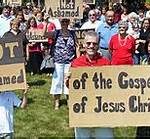 Where one goes digging is just as important as the wealth she mines. Exclusion and inclusion are necessarily a part of any book. How an argument is structured or the knowledge upon which it is acquired reflects any writer’s interpretation. One could have hoped, then, for more of a biblical foundation for the foci in Reading since the book is written for the betterment of Christian churches. A theology of common good, place, or reading would have bolstered Smith’s concerns. Questions arise, depending on one’s theological persuasion. What happens if the Christian view of any discussion is necessarily distinctive from a neighborhood? Would creational concerns have been broadened by different voices such as those from the Cornwall Alliance (115-18)? Why is there such an emphasis on “peace” (85-86) without requisite focus on the foundations of justice or righteousness necessary for the existence of peace? Why does Scriptural support for “peace” buttress the doctrine while biblical references are all but absent elsewhere? Hebraic-Christian understanding of reading is essential throughout Scripture, its inclusion would have benefited Reading for the Common Good.
Where one goes digging is just as important as the wealth she mines. Exclusion and inclusion are necessarily a part of any book. How an argument is structured or the knowledge upon which it is acquired reflects any writer’s interpretation. One could have hoped, then, for more of a biblical foundation for the foci in Reading since the book is written for the betterment of Christian churches. A theology of common good, place, or reading would have bolstered Smith’s concerns. Questions arise, depending on one’s theological persuasion. What happens if the Christian view of any discussion is necessarily distinctive from a neighborhood? Would creational concerns have been broadened by different voices such as those from the Cornwall Alliance (115-18)? Why is there such an emphasis on “peace” (85-86) without requisite focus on the foundations of justice or righteousness necessary for the existence of peace? Why does Scriptural support for “peace” buttress the doctrine while biblical references are all but absent elsewhere? Hebraic-Christian understanding of reading is essential throughout Scripture, its inclusion would have benefited Reading for the Common Good.
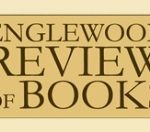 As editor of an online book review journal Smith excels at referencing works which would help everyone broaden their horizons. Perhaps the best summary for a universal reading audience is what Smith offers in the arena of “vocation.” He rightly maintains that how church people are made and what they are made to do is “ripped from the context of the church community” and immediately applied to a person’s career path (72). But once Christians are separated from The Church, their thinking is fragmented from the unity a community can bring. So Smith’s commitment to God’s reconciliation of all things is crucial (73). Reading for the Common Good will benefit all who read it because Christians must think Christianly since Christ “holds all things together” (Colossians 1.17). Chris Smith reminds us of ideas, authors, and books which will help us to become better “ambassadors of reconciliation” having been given “the ministry of reconciliation” (2 Corinthians 5.16-21).
As editor of an online book review journal Smith excels at referencing works which would help everyone broaden their horizons. Perhaps the best summary for a universal reading audience is what Smith offers in the arena of “vocation.” He rightly maintains that how church people are made and what they are made to do is “ripped from the context of the church community” and immediately applied to a person’s career path (72). But once Christians are separated from The Church, their thinking is fragmented from the unity a community can bring. So Smith’s commitment to God’s reconciliation of all things is crucial (73). Reading for the Common Good will benefit all who read it because Christians must think Christianly since Christ “holds all things together” (Colossians 1.17). Chris Smith reminds us of ideas, authors, and books which will help us to become better “ambassadors of reconciliation” having been given “the ministry of reconciliation” (2 Corinthians 5.16-21).
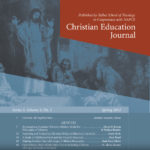 The review will appear in the Spring, 2017 edition of Christian Education Journal.
The review will appear in the Spring, 2017 edition of Christian Education Journal.
Smith, C. Christopher. Reading for the common good: How books help our churches and neighborhoods flourish. Downers Grove, IL: InterVarsity Press. 2016. 176 pp. $16.00. paper.
 Review by Mark D. Eckel, President, The Comenius Institute, Indianapolis, IN and Professor of Leadership, Education and Discipleship, Capital Seminary and Graduate School, Washington, D.C.
Review by Mark D. Eckel, President, The Comenius Institute, Indianapolis, IN and Professor of Leadership, Education and Discipleship, Capital Seminary and Graduate School, Washington, D.C.

